Closing our a bit of a duff year for broad spectrum Kenya quality, Kaguyu hit the spot as perhaps our most "Kenyan tasting Kenyan" of the three lots, and flew out the door from 11/12/24 to 29/01/25. We're hearing good rumblings from the 24/25 main crop in Kenya!
Our third Kenya selection from Nordic Approach this season comes from Kaguyu Factory, one of six active wet mills operated by the Inoi Farmers' Cooperative Society. Located at 1400 masl in Kirinyaga County, the lot has landed with perhaps the most distinctive "taste of Kenya" - a great way to end the season.
Brew Guide:
Best Brewed with: Filter
Lightest Roaster Influence:
In many years, we might be trying to tame Kenyan acidity, but with our current selection we’re finding faster roasts are needed to bring back some of the classic cups.
Best rested for: 3-4 weeks
For Filter: 94°C & 65g/L to concentrate the fruits front and centre, 97°C & 60g/L for a more balanced cup. Drop temps 2-3°C if well rested
For Espresso: 18g in to 44g out, 32-36s for something classic, or go 50g+ and 20-25s turbo style. Needs rest
We’re tasting: Structured and bright acidity - Hibiscus and blood orange while hot, alongside sweet lemon iced tea. Lots of redcurrant jam character, alongside some buttery caramels. As it cools, becoming poached rhubarb and a delicious herbal note akin to lemon thyme
Traceability
Country of Origin: |
Kenya |
Region: |
Inoi North, Kaguyu sub-location, Kerugoya, Kirinyaga county |
Producer Group: |
Around 1000 active members of the Inoi Farmer Cooperative Society, Wilson Wanjohi (Kaguyu Manager) |
Station: |
Kaguyu Factory |
Variety: |
SL-28, SL-34, Batian, Ruiru 11 Screen size: AB |
Elevation: |
Farm elevations - 1650 to 1750 MASL, Factory at 1400 MASL |
Process: |
Washed: Ripe coffees picked and delivered to Kaguyu, with pre-selection and sorting before pulping. During pulping, coffee is density sorted down channels into holding tanks. The pulped parchment coffee is dry fermented overnight before washing with clean water down grading channels (which use gravity to sort via density). The squeaky clean parchment is then soaked again in clean water for a short period prior to drying on raised beds. Drying takes up to 21 days with plastic shading during the hottest parts of the day, reducing temperature damage to the coffee. |
Import Partner: |
Nordic Approach |
Harvest: |
Crop 23/24, Arrived UK: October 2024 |
The Story:
Kirinyaga sits across the southern slopes of Mt Kenya — mineral-rich red volcanic loam soils ("Nitisol") stretch between speciality powerhouses Nyeri and Embu.
Inoi FCS, established back in 1954, has consolidated from eleven wet mills to six active stations across their catchment area across southern Kirinyaga. It's a reflection of Kenya's stark decline in production, with national output dropping 70% since the late 80s. 2024 is teaching us that even ideal growing conditions can be derailed by forces beyond the farm gate — and this lot from Kaguyu captures that complexity.
Kaguyu factory manager Wilson Wanjohi oversees the processing: cherries are graded by weight using both screen and pneumatic sorting before undergoing overnight fermentation, washing, and soaking - the classic Kenyan process that helped build the region's reputation. It's the long soak (24-48hrs) post wash we're particularly appreciative of - this has frequently been cut down to minimal time in order to increase station efficiency, and some point to this change as one element of the decline of blackcurrant forward Kenyans.
But in this year, as we've mentioned with the Gichatha and Gatomboya releases, the real story starts after the parchment leaves the drying tables.
The Kenyan government's 2023 coffee reforms hit dry milling particularly hard. The restriction on vertical integration saw multiple private mills close overnight, creating a massive bottleneck at the remaining facilities. Centralised government mills were more suited for bulk lots - with less care and quality procedures for small microlots or single-day outturn separations.
Parchment coffee started backing up — sitting in less-than-ideal storage conditions while waiting for mill space. Then came the tragic events in the Middle East, blocking vital shipping routes through the Bab al-Mandab Strait. East African coffee began piling up in hot ports, with containers facing extensive delays under the equatorial sun.
These delays matter. Heat accelerates the ageing process in green coffee — breaking down the complex chemistry that gives speciality coffee its distinctive profile. Many lots we cupped, from offer to pre-shipment samples already started off on a worse foot to previous years - talking to our colleagues in the roasting game, the quality on arrival hasn't been too hot either.
That's what makes this Kaguyu lot stand out to us — it's held its structure through the chaos, and we feel all the luckier for it, especially as this was on the last Kenyan container to ship for Nordic's summer offer.
When the reforms hit and the bureaucratic juggernaut that is the Kenyan coffee industry ground to a halt, we chose to stick with Nordic Approach's team and QC systems rather than scramble to risk alternative supply chains.
Three releases later, that decision makes sense. This Kaguyu closes the set with a reminder of what Kenya can deliver — and what should return as the reforms take hold.

![[44] Kenya - Kaguyu AB #022 [CROP 23/24 ARCHIVE]](http://scenery.coffee/cdn/shop/articles/kenya_kaguyu_shopify_aea879ec-bb7b-4e46-b3c4-ca2a5dd87595.png?v=1739274320&width=1100)
![Colombia - Quebraditas Ají Thermal Shock Washed [FESTIVE SPECIAL] 🎄](http://scenery.coffee/cdn/shop/files/colombia_quebraditas_aji_shopify.png?v=1764358600&width=533)
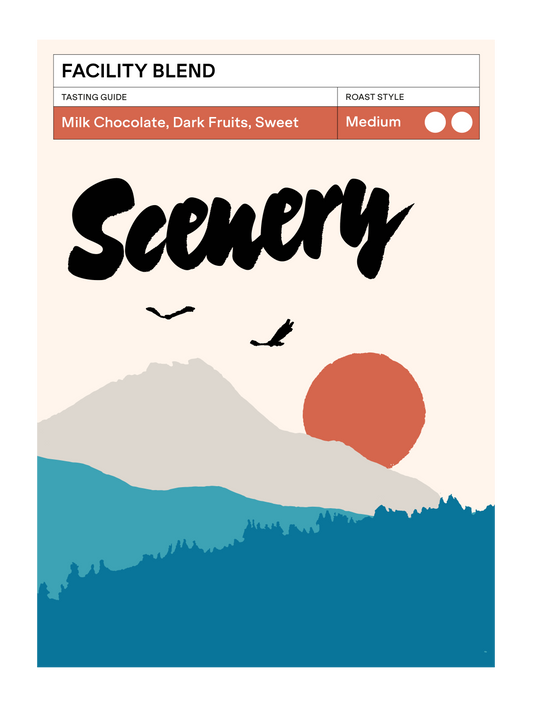

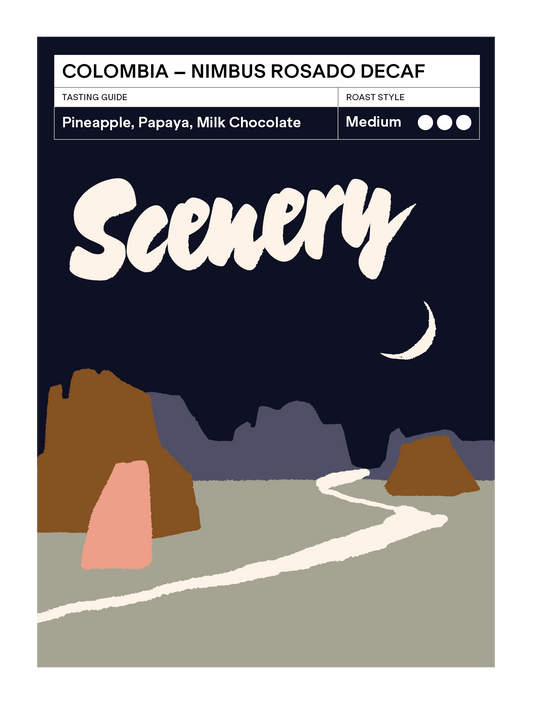

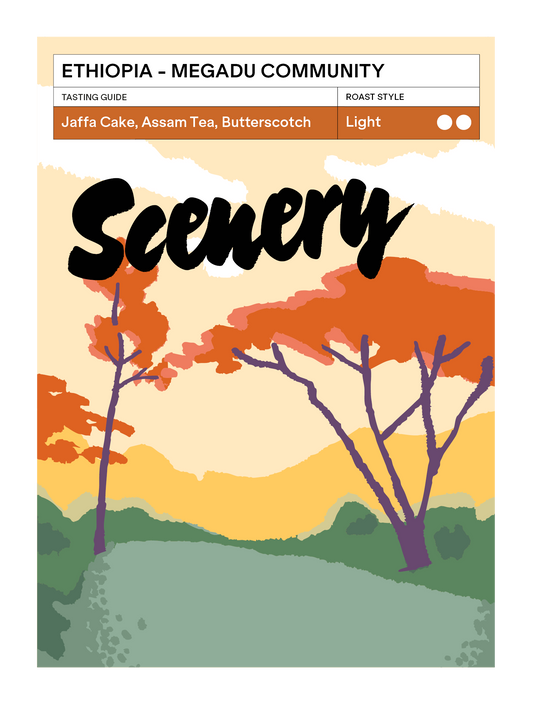


![Colombia - Luz Ángela's Chiroso [25/26]](http://scenery.coffee/cdn/shop/files/colombia_luz_angela_chiroso_2526_shopify.png?v=1764359755&width=533)


![Colombia - Quebraditas Gesha Thermal Shock Washed [25/26]](http://scenery.coffee/cdn/shop/files/colombia_quebraditas_gesha_2526_shopify.png?v=1761650288&width=533)
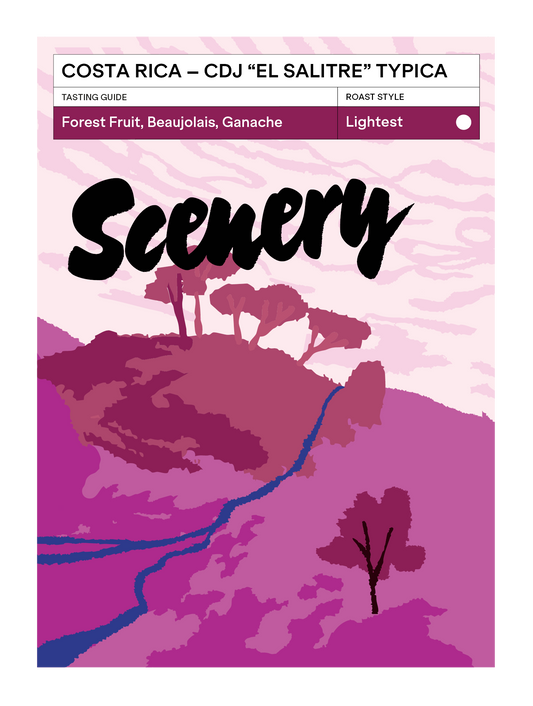
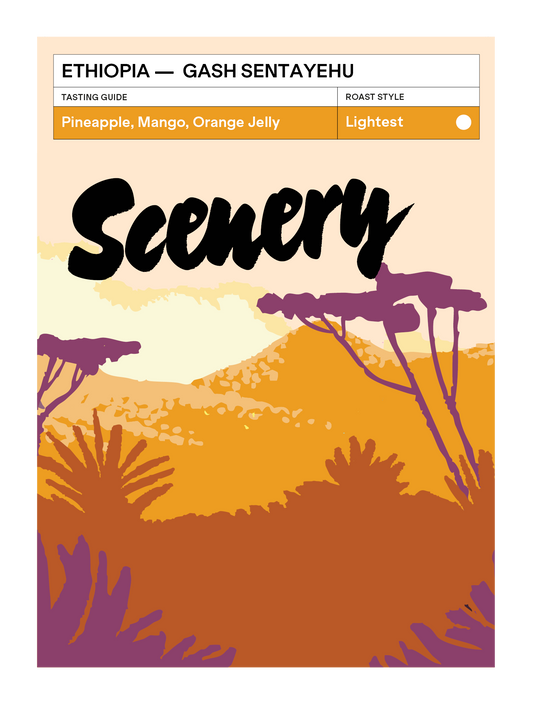
![Ethiopia - Rumudamo Natural [24/25]](http://scenery.coffee/cdn/shop/files/ethiopia_rumudamo_natural_shopify.png?v=1759952599&width=533)
![Colombia - El Jaragual Rosado [25/26]](http://scenery.coffee/cdn/shop/files/el_jaragual_rosado_2526.png?v=1757075842&width=533)